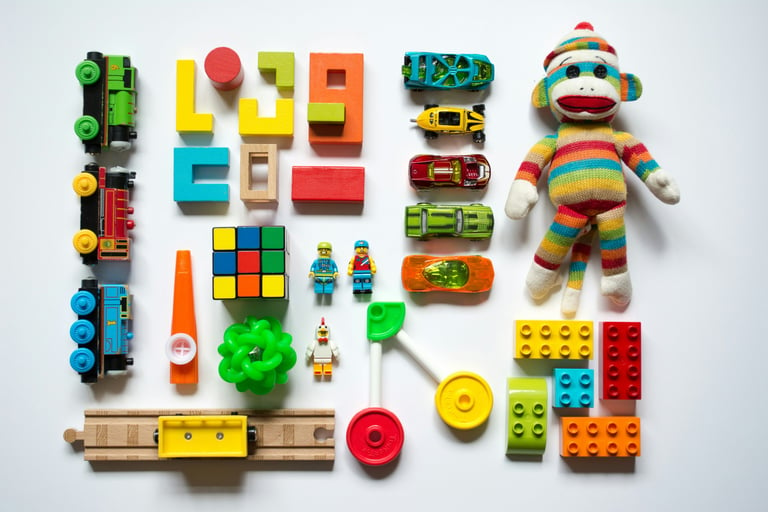The Importance of Play in Child Development: How Toys Shape Young Minds
Childhood is often referred to as the most crucial phase of human development, and at the heart of this precious time lies an activity that shapes futures in the most delightful way—play. Beyond the laughter and fun, play is a powerful tool that fuels a child's emotional, cognitive, and physical growth. And toys, in their myriad forms, act as essential catalysts in this enriching process.
1. The Role of Toys in Emotional Growth
Children have an innate ability to create narratives and express emotions while playing with toys. Dolls, action figures, or even stuffed animals often become characters in their imaginary worlds, helping children explore feelings like empathy, joy, or even sadness. Role-play toys allow kids to process and express emotions, fostering emotional intelligence. For example:
Pretend-play scenarios like “playing doctor” can empower children to work through fears or anxieties.
Plush toys often become emotional anchors, providing comfort during unfamiliar situations.
In this safe environment, toys help children navigate and articulate their emotions, cultivating resilience and self-awareness.
2. Cognitive Benefits: Play as the Foundation for Problem-Solving
When a child builds a tower out of blocks, solves a puzzle, or explores the mechanics of a toy car, they are engaging in critical cognitive skills. Toys designed to encourage problem-solving, logical thinking, and experimentation help children:
Develop spatial awareness (building blocks or LEGO sets).
Enhance memory and pattern recognition (puzzles or memory-matching card games).
Stimulate creativity and imaginative thinking (open-ended toys like clay or craft kits).
Educational toys act as bridges between play and learning, introducing concepts like numbers, shapes, and basic reasoning in a way that feels natural and enjoyable.
3. Physical Development: Building Strength Through Play
Toys that engage physical activity encourage gross and fine motor skill development. For instance:
Ride-on toys or balls enhance balance, coordination, and overall fitness.
Stacking toys or art supplies refine fine motor skills, improving hand-eye coordination and dexterity. Physical play supports healthy growth and instills an early love for movement, which is vital for lifelong wellness.
4. Social Development: Collaboration Through Play
Sharing toys, playing games, or engaging in cooperative activities fosters social skills. Board games teach teamwork, patience, and the ability to win or lose gracefully, while interactive play introduces concepts of sharing and negotiation. Toys often become tools for children to bond, communicate, and develop relationships.
5. Emotional and Cognitive Growth Through Screen-Free Toys
In today’s digital age, toys that encourage screen-free, active play become even more important. Such toys inspire focus and mindfulness, steering children away from passive consumption of media. This screen-free engagement promotes healthier brain development and helps build stronger attention spans.
Choosing the Right Toys: A Parent’s Guide
Not all toys are created equal. To maximize benefits, parents can focus on selecting toys that are:
Age-appropriate to match developmental needs.
Eco-friendly to instill environmental responsibility.
Versatile to inspire creativity and imagination.
For example, wooden blocks can serve as anything from castles to train tracks, adapting to a child’s imagination. Educational toys like STEM kits or musical instruments further provide unique avenues for growth and exploration.
The Lifelong Impact of Play
Play isn’t just a pastime—it’s a profound way for children to learn about themselves and the world around them. Toys play a pivotal role in this process by providing the tools kids need to explore, imagine, and grow. By fostering emotional resilience, cognitive sharpness, physical strength, and social connectedness, toys become more than mere playthings—they become stepping stones for a brighter future.
As caregivers and educators, choosing the right toys and encouraging play is one of the most impactful ways to nurture the next generation. After all, a child at play is not just having fun—they’re building their world, one game at a time.


